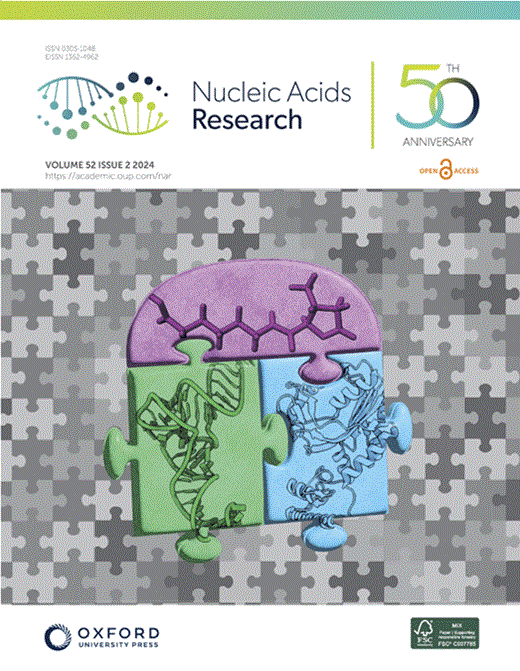Exploring the effect of activator topology on CRISPR–Cas12a trans-cleavage activity
IF 13.1
2区 生物学
Q1 BIOCHEMISTRY & MOLECULAR BIOLOGY
引用次数: 0
Abstract
The CRISPR–Cas12a system is widely used in nucleic acid detection and biosensing due to its high sensitivity, selectivity, and simple design. However, traditional CRISPR–Cas12a sensors, which rely on linear activators, face challenges such as limited operability and low stability. This study explored the impact of three different activator topologies—linear, planar, and steric—on the trans-cleavage activity of Cas12a. We developed a Cas12a-based switch using a planar activator, which demonstrated superior operability and maintained higher activity compared to linear activators. Using this planar activator, we achieved highly sensitive detection of hypochlorous acid, with a detection limit as low as 88 nM, outperforming chemical probe-based methods. The introduction of topological activators will open new avenues for the development of CRISPR–Cas12a-based biosensors, offering broad potential for diverse applications.探索激活子拓扑结构对CRISPR-Cas12a反式切割活性的影响
CRISPR-Cas12a系统具有灵敏度高、选择性好、设计简单等优点,广泛应用于核酸检测和生物传感领域。然而,传统的CRISPR-Cas12a传感器依赖于线性激活剂,面临着操作性有限、稳定性低等挑战。本研究探讨了三种不同的激活剂拓扑结构(线性、平面和立体)对Cas12a反式裂解活性的影响。我们使用平面激活剂开发了一种基于cas12的开关,与线性激活剂相比,该激活剂具有优越的可操作性,并保持了更高的活性。利用该平面激活剂,我们实现了次氯酸的高灵敏度检测,检测限低至88 nM,优于基于化学探针的方法。拓扑激活剂的引入将为基于crispr - cas12的生物传感器的开发开辟新的途径,为各种应用提供广阔的潜力。
本文章由计算机程序翻译,如有差异,请以英文原文为准。
求助全文
约1分钟内获得全文
求助全文
来源期刊

Nucleic Acids Research
生物-生化与分子生物学
CiteScore
27.10
自引率
4.70%
发文量
1057
审稿时长
2 months
期刊介绍:
Nucleic Acids Research (NAR) is a scientific journal that publishes research on various aspects of nucleic acids and proteins involved in nucleic acid metabolism and interactions. It covers areas such as chemistry and synthetic biology, computational biology, gene regulation, chromatin and epigenetics, genome integrity, repair and replication, genomics, molecular biology, nucleic acid enzymes, RNA, and structural biology. The journal also includes a Survey and Summary section for brief reviews. Additionally, each year, the first issue is dedicated to biological databases, and an issue in July focuses on web-based software resources for the biological community. Nucleic Acids Research is indexed by several services including Abstracts on Hygiene and Communicable Diseases, Animal Breeding Abstracts, Agricultural Engineering Abstracts, Agbiotech News and Information, BIOSIS Previews, CAB Abstracts, and EMBASE.
 求助内容:
求助内容: 应助结果提醒方式:
应助结果提醒方式:


